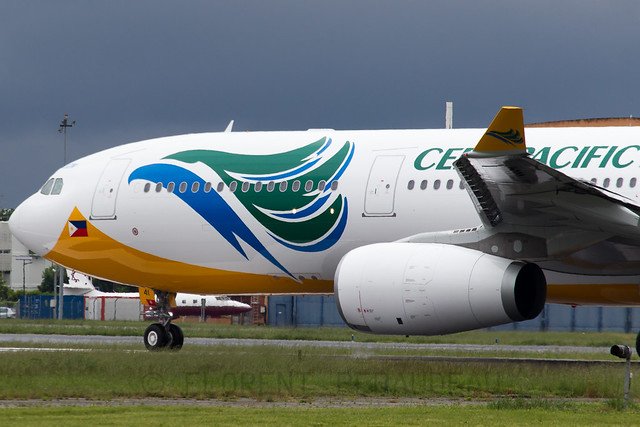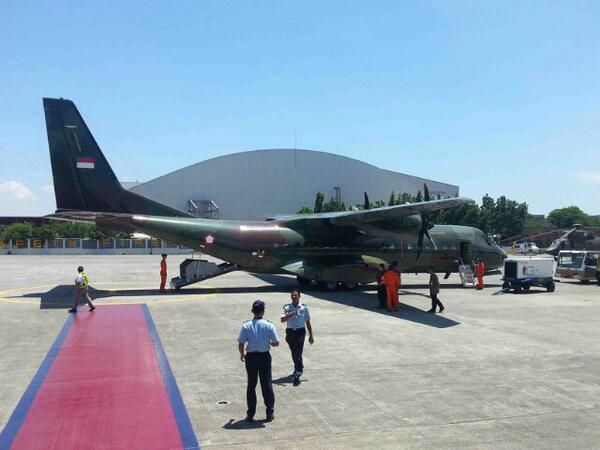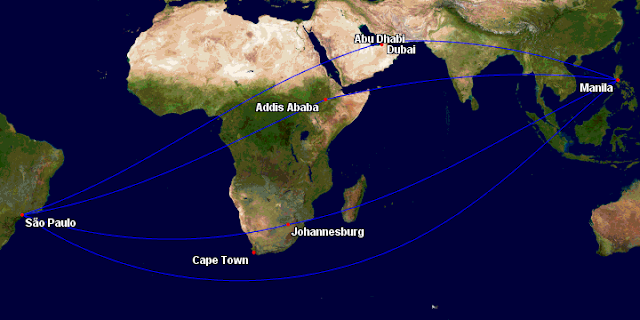May 30, 2013
February 11, 1911 - February 11, 2011. First Red Devil biplane was flown in Manila with James C. Mars as its first pilot.
DND to add 21 new Hueys by Negotiated Bid
May 27, 2013
The Department of National Defense (DND) will acquire 21 UH-1 helicopters through a negotiated procurement after the two public biddings for the air assets failed.
Defense Undersecretary Fernando Manalo said they need to fast-track the acquisition of the helicopters to beef up the Air Force’s security and disaster response capabilities.
“We cannot afford not to have additional helicopters for a long time. The rainy season is approaching. We need the helicopters for disaster response,” Manalo told The STAR over the weekend. “We also need them for our existing internal security operations.”
The government has allotted P1.2649 billion for 21 helicopters, which were originally intended to support election-related duties. However, the procurement of the air assets has been delayed due to failed biddings.
“The decision is to proceed with the procurement. Since there are two failed biddings, it will be through negotiated bid,” he said.
Headlines ( Article MRec ), pagematch: 1, sectionmatch: 1
Manalo explained that under a negotiated bid, companies that signified interest to supply the equipment would be invited to submit a proposal. Other firms could also submit offers.
A team composed of representatives from the agency that would use the equipment would evaluate the proposals.
The first public bidding for the 21 helicopters was held last December.
The Defense System/Radom Israel and Rice Aircraft Services, Inc. participated in the bidding but both companies failed to meet the requirements set by the DND.
The second bidding was held last February and only one bidder - the US-based Rice Aircraft Services - was declared eligible to submit an offer.
The DND, however, declared that the company had failed to satisfy some financial requirements during the post-qualification phase.
“The problem lies on the technical and administrative matters on the part of Rice,” Manalo said.
“(Rice) did not meet (some requirements) based on the financial statements (it submitted). Through such documents, we can see a bidder’s financial capacity,” he added.
The DND requires bidders to submit financial documents to determine if they are capable of undertaking the project or supplying the needed equipment.
The Air Force requested for additional helicopters as early as 2011.
It only has 16 mission-capable UH-1 helicopters in its inventory, 51 units short of the ideal number of operational combat utility helicopters.
Marriage Out of Wedlock
PAL to Fly Sao Paolo via LAX
May 27, 2013
CN295 heading for PAF
May 26, 2013
 |
| Defense Undersecretary Pio Lorenzo Batino (left) and Indonesian Vice Minister of Defense Sjafrie Sjamsoeddin, walk around a CN-295 military transport aircraft prior to a demonstration flight |
PAL Secures 5th Freedom Rights to Brazil
As Philippines enters first Air Services Agreement to South America
May 23, 2013
 "This agreement allows for seven flights between Manila and Brazil,
with fifth freedom traffic rights to any third country points. In
addition it allows for unlimited traffic rights between Brazil and other
gateways in the Philippines except Manila, also with fifth freedom to
any third country points," Arcilla said.
"This agreement allows for seven flights between Manila and Brazil,
with fifth freedom traffic rights to any third country points. In
addition it allows for unlimited traffic rights between Brazil and other
gateways in the Philippines except Manila, also with fifth freedom to
any third country points," Arcilla said.
May 23, 2013
The Philippines and Brazil on Wednesday signed its first Air Service
Agreement with the largest South American country in a bid to boost travel between the two countries, an Official of the Civil Aeronautics Board (CAB) discloses.
CAB Executive Director Carmelo Arcilla said the Philippines, through its designated carrier Philippine Airlines got seven flight entitlements to either Sao Paolo or Rio de Janeiro with fifth freedom traffic rights to any third country points.
Brazil on the other hand also got seven flight to Manila with TAM as the
designated airline with fifth freedom traffic rights to any third country points as well.
 "This agreement allows for seven flights between Manila and Brazil,
with fifth freedom traffic rights to any third country points. In
addition it allows for unlimited traffic rights between Brazil and other
gateways in the Philippines except Manila, also with fifth freedom to
any third country points," Arcilla said.
"This agreement allows for seven flights between Manila and Brazil,
with fifth freedom traffic rights to any third country points. In
addition it allows for unlimited traffic rights between Brazil and other
gateways in the Philippines except Manila, also with fifth freedom to
any third country points," Arcilla said.
Fifth freedom rights simply means the airline like PAL can land in a
different country i.e. Dubai or Addis Ababa, pick up passengers and bring them to Brazil. Similarly, TAM airlines can land in Dubai or Addis Ababa pick up passengers and bring them to Manila.
How Your Airlines Fare?
The Science of Airline Economics in the Philippines
and why Hawaiian says Goodbye.
LF- Load Factor.
Passenger Load Factor (PLF) or simply LF is defined as measure of the amount of utilisation of the total available seats offered by airlines to a given route. It is useful for calculating the
average occupancy on the airline seat for a given destination. By using this information, airlines can determine
the profitability and revenue potential of the route network.
In much simpler terms, Load factor represents the proportion of airline output that is
actually consumed. Load
factor for a single flight can be calculated by dividing the number
of passengers by the number of seats.
If an airline offers 1000 seats i.e. Manila-Palau and only 700 seats are sold, the airline has a load factor of 70% for this route.
Based on the 2013 figures released by the Civil Aeronautics Board (CAB), Air Macau is losing terribly followed by Saudia and Thai Airways losing badly. Hawaiian on number 4 has said goodbye, while Kuwait occupies the number 5 slots. Both Saudia and Kuwait Airways makes stop-over flight in Bangkok to compensate their losses. KLM with stops at Taipei improved its performance by registering 64% seat occupancy.
Sunwest Secures Bicol Airport Contract
May 22, 2013
PAL Quits Delhi
May 21, 2013
Air Traffic Close To Saturation Point
Air passenger traffic rose only by 1.2% in Q1
By Miguel R. Camus
By Miguel R. Camus
May 20, 2013
The country’s airline industry continued to post gains in terms of overall passenger traffic in the first quarter, but at a much slower pace than that recorded in 2012, data from the Civil Aeronautics Board showed.
Information posted on the agency’s website showed that total domestic and international traffic increased by about 1.2 percent to 9.58 million in the first three months of 2013. In the same period last year, passenger traffic grew by 11.7 percent. Philippine Airlines continued to be the preferred carrier for international flights while Cebu Pacific led in domestic traffic, CAB reported.
International traffic, comprising incoming and outgoing flights, hit 4.5 million passengers during the period, up nearly 5 percent from the roughly 4.3 million passengers registered in 2012.
But domestic air travel slipped by 2 percent to 5.06 million during the period.
Cebu Pacific, a budget carrier owned by JG Summit Holdings, accounted for almost half of all domestic flights as it carried 2.52 million passengers in the first quarter.
This was followed by flag carrier Philippine Airlines, a unit of conglomerate San Miguel Corp., and its budget unit PAL Express, which accounted for a combined 35 percent of total domestic flights.
Zest Air flew 496,926 passengers while SeaAir transported 209,979 passengers, CAB data showed. Zest Air is now 49 percent-owned by Air Asia Bhd., the region’s largest budget carrier.
Philippine Airlines, PAL Express and Zest Air saw a decline in the number of passengers in the first quarter while that of Cebu Pacific grew, CAB said.
Top local carriers were likewise preferred when compared with their international rivals plying overseas routes.
Although Philippine Airlines saw a 10-percent decline in passenger traffic during the period, it still flew 988,889 people in the first quarter, accounting for nearly 22 percent of all international flights.
Cebu Pacific, which is aggressively expanding its operations overseas, flew 733,127 passengers, up by 3 percent, accounting for 16.2 percent.
Zest Air also widened its market share, which grew to 3.36 percent during the period from 1.6 percent in 2012 as it ferried more people to overseas destinations. SeaAir had a market share of 1.74 percent in international flights.
The most popular foreign carrier in the three months to March was Cathay Pacific, with 353,117 passengers; followed by Emirates, with 210,210; Korean Air, with 185,856; Singapore Airlines, with 158,987; Asiana Airlines, with 153,380; and Etihad Airways, with 132,748 passengers.
Information posted on the agency’s website showed that total domestic and international traffic increased by about 1.2 percent to 9.58 million in the first three months of 2013. In the same period last year, passenger traffic grew by 11.7 percent. Philippine Airlines continued to be the preferred carrier for international flights while Cebu Pacific led in domestic traffic, CAB reported.
International traffic, comprising incoming and outgoing flights, hit 4.5 million passengers during the period, up nearly 5 percent from the roughly 4.3 million passengers registered in 2012.
But domestic air travel slipped by 2 percent to 5.06 million during the period.
Cebu Pacific, a budget carrier owned by JG Summit Holdings, accounted for almost half of all domestic flights as it carried 2.52 million passengers in the first quarter.
This was followed by flag carrier Philippine Airlines, a unit of conglomerate San Miguel Corp., and its budget unit PAL Express, which accounted for a combined 35 percent of total domestic flights.
Zest Air flew 496,926 passengers while SeaAir transported 209,979 passengers, CAB data showed. Zest Air is now 49 percent-owned by Air Asia Bhd., the region’s largest budget carrier.
Philippine Airlines, PAL Express and Zest Air saw a decline in the number of passengers in the first quarter while that of Cebu Pacific grew, CAB said.
Top local carriers were likewise preferred when compared with their international rivals plying overseas routes.
Although Philippine Airlines saw a 10-percent decline in passenger traffic during the period, it still flew 988,889 people in the first quarter, accounting for nearly 22 percent of all international flights.
Cebu Pacific, which is aggressively expanding its operations overseas, flew 733,127 passengers, up by 3 percent, accounting for 16.2 percent.
Zest Air also widened its market share, which grew to 3.36 percent during the period from 1.6 percent in 2012 as it ferried more people to overseas destinations. SeaAir had a market share of 1.74 percent in international flights.
The most popular foreign carrier in the three months to March was Cathay Pacific, with 353,117 passengers; followed by Emirates, with 210,210; Korean Air, with 185,856; Singapore Airlines, with 158,987; Asiana Airlines, with 153,380; and Etihad Airways, with 132,748 passengers.
5J Flies Phuket
Starts August 16
May 18, 2013
May 18, 2013
Cambodia Airlines To Use PAL Fleet
May 10, 2013
Trainer plane stalls flights
 May 9, 2013
May 9, 2013By Eric B. Apolonio
A small trainer aircraft from Clark International Airport Wednesday
morning touched down at the Ninoy Aquino International Airport with its
landing gear unretracted blocking Runway 06 for almost an hour.
The Piper Aztec plane (RP-C1095) of Fast Fly Academy Training School
was flown by Captain Miguel Perey along with Co-Pilot Marvin Raguvik and
passenger Lawrence Uy escaped unhurt but the mishap led to the runway’s
closure from 6:30 a.m. to 7:20 a.m.
Delayed were four international flights–China Southern Flight CZ180
to Beijing; Delta Airlines Flight DL 630 to Nagoya; Cathay Pacific
Flight CX 904 Hong Kong and Cebu Pacific flight 5J 110 to Hong
Kong–along with domestic schedules of were affected , while Domestic
flights from PAL flight PR 453 to General Santos, Cebu Pac Flight 5J 551
Cebu, 5J 771 Pagadian, 5J 785 Butuan, 5J 583 Cagayan, 5J 963 Davao, 5J
474 Bacolod,Air Phil Flight 2P 941 Puerto Princesa, 2P 972 Tacloban and
2P 202 to Roxas City.
NAIA’s 06/24 handles wide-body commercial aircraft while Runway 13 takes up general aviation.
NAIA’s runways average 36 events (takeoffs and landings) per hour,
but actual scheduled commercial and general aviation flights, including
trainer aircraft and fish runs, go as high as 50 events per hour during
daytime, causing congestion that result in flight delays and
cancellations.
Qatar Flies Clark
Begins October 28
May 7, 2013
May 7, 2013
FAA confirms ICAO findings
Upgrade to be Announced Soon
May 7, 2013
May 7, 2013
| Andrew told FAA representatives that their review is no longer needed as ICAO no longer tags the country as a "significant safety concern." The US regulator will issue announcement soon. |
The Federal Administration Administration (FAA) has completed its reassessment of the country's aviation standards scheduled on May 2 and 3, 2013. But the US regulator has not made itself available for comment regarding the Agency's visit to the country last week.
"They have accepted our position and we have accepted their position at the same time, so we have meeting of minds," says Deputy Director General John C. Andrews yesterday.
Andrews told that FAA inspectors are not the ones who decide the category rating but merely inspect compliance to aviation standards which then make recommendations to John Barbagallo, FAA Manager for International programs and policy.
CAAP is however optimistic on the results of the audit as they defended their position on international compliance previously issued by United Nation's International Civil Aviation Organization (ICAO).
Andrews told that FAA inspectors are not the ones who decide the category rating but merely inspect compliance to aviation standards which then make recommendations to John Barbagallo, FAA Manager for International programs and policy.
CAAP is however optimistic on the results of the audit as they defended their position on international compliance previously issued by United Nation's International Civil Aviation Organization (ICAO).
"We are very optimistic of the upgrade," said Andrews.
John Barbagallo of the FAA's Flight Standards Service sent team of
Nicholas Reyes, Manager of the FAA’s Western Pacific-Flight Standards
Division, and James Spillane, Senior FAA Representative to the
Philippines, who inspected the deficient concerns and were briefed
on the country’s compliance with International Civil Aviation
Organization (ICAO) standards.
IATA Prefers Single Airport for Manila
May 6, 2013
Airbus leases Four A340 to PAL
For Immediate North America Deployment
May 3, 2013 |
Airbus is leasing four A340-300 to Philippine Airlines as stop- gap measure to its flight operations in North America. The airline plans to add flights to Hawaii, Los Angeles and San francisco. The four A340-300 were previously operated by Spain's Iberia Airlines of the International Airlines Group previously registered ex EC-HDQ (Cn 302), EC-HGU
(Cn 318), EC-HGX (Cn332), EC-LHM (Cn 387). They will be re-registered in the Philippines as RP-C3435, RP-C3436, RP-C3437, RP-C3438.
|
Route Of The Problem
 The Politics of Category II
The Politics of Category II May 2, 2013
By Conrado R. Banal III
When the country’s flag carrier, Philippine Airlines, or PAL, launched last week its 12 new routes, seated beside each other at the table were PAL president Ramon S. Ang and Tourism Secretary Ramon Jimenez.
Hmmm… Do you think Jimenez might be the first tourism secretary in quite a long time that, as an avowed mission in life, would not be directly hostile to the ever-struggling flag carrier?
After all, among the priorities of Jimenez at the Department of Tourism, or the DOT, as spelled out in his comprehensive tourism program, was what the DOT called “market accessibility.”
For the sake of our brilliant senatorial candidates, it means that Jimenez simply applied tourism economics, which has been telling us all this time that the 100 percent value-added sector called “tourism” would only take off if the government would put up modern infrastructure called airports that, on their own, with no need for incentives such as tax breaks and all sorts of freebies, would naturally attract airline expansions.
In the past, with the false pretense of supporting tourism, certain bosses at the DOT pushed to the government a bright idea to give away the main market of PAL. This was of course the bulk of overseas Filipinos who as of last count already numbered more than 10 million. Former DOT big shots wanted to open our country to all—I mean “all”—foreign airlines under a free-for-all scheme. The bright idea naturally came from some foreign governments in cooperation with their own troubled airlines. They obviously wanted the humongous OFW market.
In the PAL launch last week, PAL president RSA, who also happens to be the COO and president of the country’s biggest conglomerate, San Miguel, announced the airline’s 12 new destinations, namely Kuala Lumpur (Malaysia); Darwin, Brisbane and Perth (Australia); Guangzhou (China); Abu Dhabi (United Arab Emirates); Doha (Qatar); Riyadh, Jeddah and Dammam (Saudi Arabia); and Dubai (United Arab Emirates).
In November this year, PAL also intends to resume domestic flights to the pristine Basco in Batanes, which is already the most fascinating destination for both domestic and foreign tourists.
Take note that six of those new routes, or half of them, were planned to be in the Middle East. To serve the multitude of OFWs in that part of the world, PAL must nevertheless compete with heavily subsidized airlines.
Well, the world airline industry knows fully well that the root of the problem in the Middle East routes was the government subsidy extended to Middle East-based airlines. OK, subsidized fuel and scandalously cheap petroleum!
That was, in fact, the reason offered by a number of European airlines that already dropped their non-stop direct flights to Manila. They could not compete with Middle East airlines unconstrained by the exorbitant cost of fuel.
Still, the business-math wizard RSA figured that, despite the subsidized fuel of its competitors, PAL would still make money on its new Middle East routes through a combination of secret moves, although between us girls, I could say that RSA would rely chiefly on PAL’s new fleet of aircraft.
As a rule of thumb in the airline business worldwide, fuel accounts for about 40 percent of the airplane fare, making it the most fuel-demanding, cost-challenging transport business in the entire universe.
With the entry of San Miguel into PAL last year, plus the $500-million injection of fresh capital, the airline was able to embark on fleet modernization, acquiring the latest models of US aircraft maker Boeing and the European alliance called Airbus, which were known in the airline business as the new generation of fuel-efficient aircraft.
At an average fare of $800 one-way, the Middle East Market would perhaps remain attractive to RSA, considering that PAL already took delivery of 75 of the 100 new aircraft in its planned fleet modernization.
It cannot be denied that the presence of PAL in the new Middle East routes may trigger the “fare war” much desired by OFWs for so long now, since the Middle East airlines must contend with the other “special” services of PAL, such as warmth, familiar cuisine and beautiful flight attendants.
But RSA figured that Middle East airlines could only enjoy fuel subsidy in their home base. In other countries such as the Philippines, they would have to pay the same rate for fuel as other airlines. Meaning, really, half of the problem solved!
PAL nevertheless must contend with other problems such as the refusal of the governments of South Korea and Japan to grant PAL additional flights, which PAL felt to be rather underserved, as airline ticket prices have been flying through the roof because of big demand with short supply.
Reason for their refusal has always been our CAT-II problem, courtesy of the US Federal Aviation Authority, or the FAA, which a few years ago downgraded its rating of the Philippines for airport safety to Category II. As a result, PAL could not add new routes to the United States or even replace its existing aircraft serving the US routes with new ones.
From what I heard, our salvation from the damning CAT-II has been a moving target for the Aquino (Part II) administration, as the FAA insisted on some measures that would perhaps take more than a lifetime for us to meet. For instance, the FAA insisted that the government should not rely on PAL experts for pilot training, meaning, the government should train its own instructors, which would only take years and years of flying experience, and where would you get that except from PAL?
Hmmm, maybe there is something more in the CAT-II problem than just the airport “safety.” After all, US airlines are also having a grand time flying here, serving those 10 plus million OFWs.
Hmmm… Do you think Jimenez might be the first tourism secretary in quite a long time that, as an avowed mission in life, would not be directly hostile to the ever-struggling flag carrier?
 |
| "FAA insisted that the government should not rely on PAL experts for pilot training" |
For the sake of our brilliant senatorial candidates, it means that Jimenez simply applied tourism economics, which has been telling us all this time that the 100 percent value-added sector called “tourism” would only take off if the government would put up modern infrastructure called airports that, on their own, with no need for incentives such as tax breaks and all sorts of freebies, would naturally attract airline expansions.
In the past, with the false pretense of supporting tourism, certain bosses at the DOT pushed to the government a bright idea to give away the main market of PAL. This was of course the bulk of overseas Filipinos who as of last count already numbered more than 10 million. Former DOT big shots wanted to open our country to all—I mean “all”—foreign airlines under a free-for-all scheme. The bright idea naturally came from some foreign governments in cooperation with their own troubled airlines. They obviously wanted the humongous OFW market.
In the PAL launch last week, PAL president RSA, who also happens to be the COO and president of the country’s biggest conglomerate, San Miguel, announced the airline’s 12 new destinations, namely Kuala Lumpur (Malaysia); Darwin, Brisbane and Perth (Australia); Guangzhou (China); Abu Dhabi (United Arab Emirates); Doha (Qatar); Riyadh, Jeddah and Dammam (Saudi Arabia); and Dubai (United Arab Emirates).
In November this year, PAL also intends to resume domestic flights to the pristine Basco in Batanes, which is already the most fascinating destination for both domestic and foreign tourists.
Take note that six of those new routes, or half of them, were planned to be in the Middle East. To serve the multitude of OFWs in that part of the world, PAL must nevertheless compete with heavily subsidized airlines.
Well, the world airline industry knows fully well that the root of the problem in the Middle East routes was the government subsidy extended to Middle East-based airlines. OK, subsidized fuel and scandalously cheap petroleum!
That was, in fact, the reason offered by a number of European airlines that already dropped their non-stop direct flights to Manila. They could not compete with Middle East airlines unconstrained by the exorbitant cost of fuel.
Still, the business-math wizard RSA figured that, despite the subsidized fuel of its competitors, PAL would still make money on its new Middle East routes through a combination of secret moves, although between us girls, I could say that RSA would rely chiefly on PAL’s new fleet of aircraft.
As a rule of thumb in the airline business worldwide, fuel accounts for about 40 percent of the airplane fare, making it the most fuel-demanding, cost-challenging transport business in the entire universe.
With the entry of San Miguel into PAL last year, plus the $500-million injection of fresh capital, the airline was able to embark on fleet modernization, acquiring the latest models of US aircraft maker Boeing and the European alliance called Airbus, which were known in the airline business as the new generation of fuel-efficient aircraft.
At an average fare of $800 one-way, the Middle East Market would perhaps remain attractive to RSA, considering that PAL already took delivery of 75 of the 100 new aircraft in its planned fleet modernization.
It cannot be denied that the presence of PAL in the new Middle East routes may trigger the “fare war” much desired by OFWs for so long now, since the Middle East airlines must contend with the other “special” services of PAL, such as warmth, familiar cuisine and beautiful flight attendants.
But RSA figured that Middle East airlines could only enjoy fuel subsidy in their home base. In other countries such as the Philippines, they would have to pay the same rate for fuel as other airlines. Meaning, really, half of the problem solved!
PAL nevertheless must contend with other problems such as the refusal of the governments of South Korea and Japan to grant PAL additional flights, which PAL felt to be rather underserved, as airline ticket prices have been flying through the roof because of big demand with short supply.
Reason for their refusal has always been our CAT-II problem, courtesy of the US Federal Aviation Authority, or the FAA, which a few years ago downgraded its rating of the Philippines for airport safety to Category II. As a result, PAL could not add new routes to the United States or even replace its existing aircraft serving the US routes with new ones.
From what I heard, our salvation from the damning CAT-II has been a moving target for the Aquino (Part II) administration, as the FAA insisted on some measures that would perhaps take more than a lifetime for us to meet. For instance, the FAA insisted that the government should not rely on PAL experts for pilot training, meaning, the government should train its own instructors, which would only take years and years of flying experience, and where would you get that except from PAL?
Hmmm, maybe there is something more in the CAT-II problem than just the airport “safety.” After all, US airlines are also having a grand time flying here, serving those 10 plus million OFWs.
New York?
May 1, 2013
Subscribe to:
Posts (Atom)


















